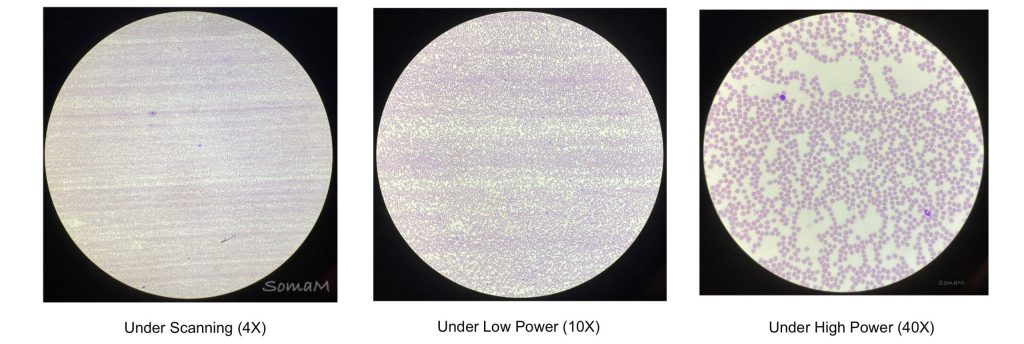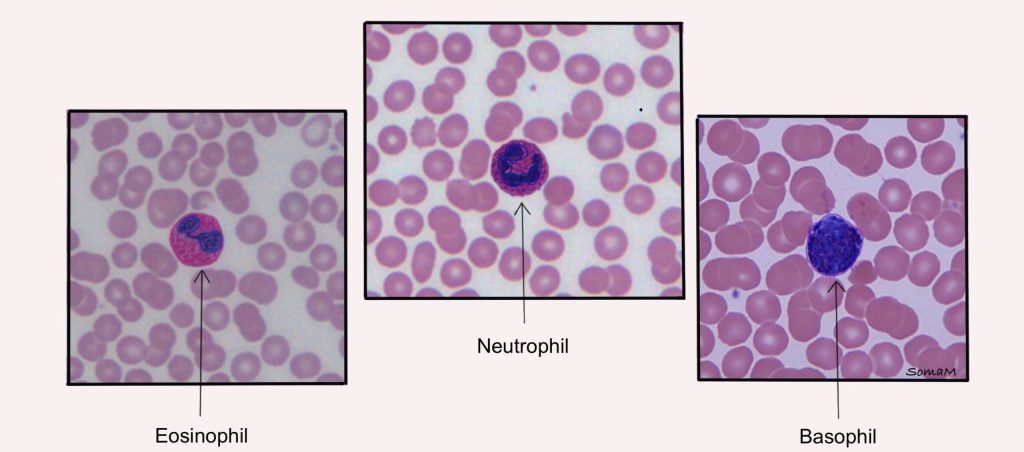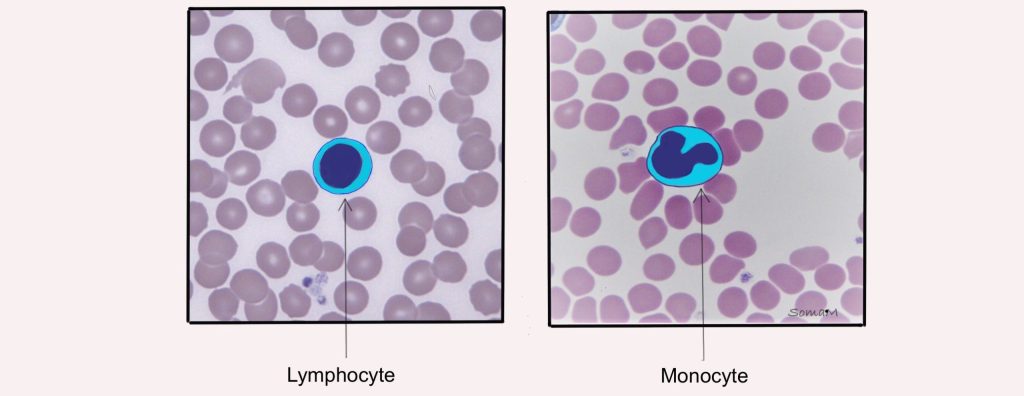Blood
Blood is a very unique connective tissue type because it is a fluid. We have discussed before that all connective tissues contain cells, ground substance, and fibers. Blood contains many “cell” types (erythrocytes, leukocytes, and platelets) and lots of ground substance (plasma). However, the fibers in blood are dissolved in the plasma, making them impossible to see on light microscopy. The protein fibers must be dissolved for the blood to flow freely through our vessels. These soluble protein fibers are activated during blood clotting to become an insoluble protein meshwork that helps to plug damaged blood vessels.
Formed Elements
We refer to the “cells” in blood as formed elements because most of the “cells” don’t fit the usual criteria to be called cells at all. Instead, we call the cellular structures formed elements. The most abundant formed elements, erythrocytes (red blood cells) and platelets, do not contain a nucleus. In fact, the only formed element that contains a nucleus are the leukocytes (white blood cells).
Figure 1: Blood smear under varied magnification – scanning objective lens (4x, left), low power lens (10x, center), and high power lens (40x, right)

Table 1: Blood
| Tissue Type | Blood |
|---|---|
| General Description | Only formed elements visible as extracellular matrix is liquid, composed mostly of pink-staining, small round, biconcave erythrocytes with no nucleus, may also see very small dark-staining platelets and/or larger leukocytes |
| Location | In blood vessels and heart |
| Functions | Erythrocytes transport O2 and CO2, platelets play a role in blood clotting, leukocytes play a role in immune function, and extracellular matrix transports nutrients, waste products, and hormones |
| Helpful Hints | Look for mostly round cells with no nuclei, due to the concave shape of the cells the center of the cell may appear not to stain well |
Figure 2: Blood smear with types of formed elements identified, with and without illustration overlay
Check out our YouTube video to help you understand blood:
Erythrocytes
Erythrocytes, or red blood cells, have no nucleus, so we refer to them as anucleate. Erythrocytes contain virtually no organelles and are filled with millions of molecules of hemoglobin, which helps to transport O2 and CO2. Erythrocytes have a biconcave shape, which allows for easier diffusion of O2 and CO2 into and out of the cell.
Remember that erythrocytes are anucleate, so you are looking for cells that lack the typical blue/purple central nucleus structure found in other cell types. Instead, look for pale pink circular cells that may have a white area in the center (Figure 2).
Platelets
Platelets are cell fragments that are important in blood clotting. On microscopy, they are often mistaken for cellular debris (Figure 2).
Leukocytes
Leukocytes, or white blood cells, are the only nucleated cells in blood (Figure 2). Leukocytes are important for our immune function. The 5 types of leukocytes are grouped into two categories: granulocytes (have prominent-staining cytoplasmic granules) and agranulocytes (without prominent-staining cytoplasmic granules). Granulocytes include: neutrophils, eosinophils, and basophils (Figure 3). Agranulocytes include monocytes, and lymphocytes (Figure 4).
Figure 3: Leukocytes: types of granulocytes with illustration overlay

Figure 4: Leukocytes: types of agranulocytes with illustration overlay

IMPORTANT NOTE: Anatomy and Physiology II will go over the types of leukocytes in more detail.
Chapter Illustrations By:
Soma Mukhopadhyay, Ph.D.
the fluid in blood, containing dissolved solutes such as: proteins, blood gasses (CO2 and O2), hormones, nutrients, waste products
red blood cells, biconcave cells lacking a nucleus and organelles that contain ~250 million molecules of hemoglobin
fragments of a cell precursor (megakaryocytes) that function to stop bleeding of a damaged blood vessel
white blood cells, function in immune response
without a nucleus
narrow in the center and thicker on the edges, RBC's are biconcave or shaped like a donut (if the icing touched in the center)
containing a nucleus
contain prominent-staining cytoplasmic granules
without prominent-staining cytoplasmic granules
